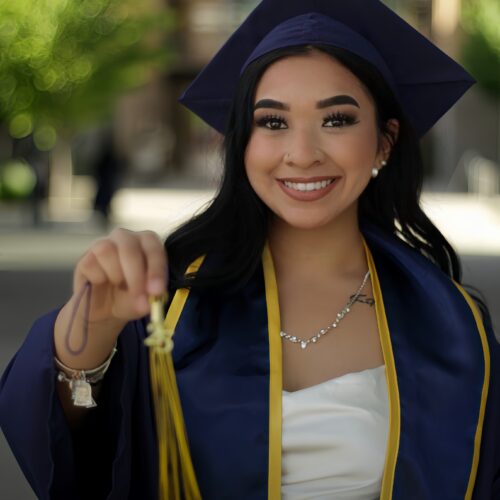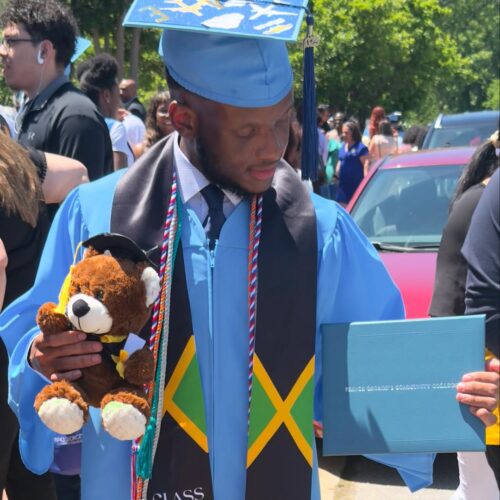As COVID’s impact on higher education has continued into the 2021-22 academic year, Black, Latinx, and low-income students are still bearing the brunt of drop-offs in educational attainment. As organizations like PeerForward work with educators to even the playing field for youth from low-income communities, it is important to evaluate how the higher education landscape is changing for these students and what opportunities exist for overcoming pandemic-related setbacks.
Colleges across the country hoped for improved enrollment numbers this fall, but the pandemic recovery has been unequal. While the nation’s most elite universities are building their endowments and welcoming higher volumes of applications, many less well-funded institutions and colleges that primarily serve low-income and minority students have seen their enrollments drop further. Postsecondary enrollment of students from high schools in low-income neighborhoods dropped 30% in 2020, and in 2021, postsecondary enrollment among Black and Latinx students fell a further 5.1% and 2.8%, respectively.
According to the National Student Clearinghouse Research Center, community colleges have struggled the most, shouldering more than 65% of undergraduate enrollment declines in the 2020-21 school year. Community colleges play a significant role in serving low-income and minority students, making these groups the hardest hit by tumbling enrollment numbers.
While these setbacks are proving longer-term than expected, they can also provide clues on how we can promote postsecondary access and success for students from low-income backgrounds. For example, data from the National Student Clearinghouse Research Center shows that the youngest students at colleges have been dropping out at the highest rates during the pandemic – a finding that indicates the need for setting students on a strong path to higher education while they are still in high school (the need is especially great considering that students who delay college after high school are less likely to complete a degree).
A recent ECMC survey of high school students provides another clue as to why these students are increasingly unlikely to have college plans. The September survey reported that over 65% of high school students cite college tuition costs and student loan amounts as significantly influencing their postgraduate plans; 43% identified cost as the single most important factor in their decision-making on college. Yet even as tuition costs appear to be one of the primary barriers to higher education enrollment in the US, students who are most in need of financial support are increasingly unlikely to secure it, as high schools in low-income communities saw a 16% drop in FAFSA completions across the country this past year (even higher than the nation-wide 12% decline). These disheartening findings highlight the urgent need for spreading awareness about federal and state aid within low-income communities.
Finally, despite devastating pandemic losses, one of the most encouraging signs of a concerted movement toward higher education equity is the shift toward test-optional policies in college admissions. Critics of standardized testing have long argued that these tests disadvantage students who lack the tutoring and test preparation resources that many higher income applicants utilize. Indeed, many colleges’ decisions to waive testing requirements during the pandemic have resulted in more diverse incoming classes: a survey of college officials earlier this year by Maguire Associates found broad consensus that these institutions are welcoming more students than before from underrepresented, first-generation, and low-income backgrounds. Encouraging more students to look beyond their test scores when considering their postsecondary prospects is a promising first step toward a more equitable college admissions process.
With the pandemic laying bare the gaps that have long existed in postsecondary education success, we have a responsibility to act with urgency to serve our most underrepresented and under-resourced groups. With certain key measures such as free community college being struck out of the federal government’s Build Back Better plan, it is essential that we continue to provide wrap-around programs to vulnerable students while leveraging the power of Youth Activation – which is at the heart of the PeerForward Method – to face these challenges.
Supporting youth leaders as they initiate change in their communities is key to achieving educational equity for low-income, Black, and Latinx students. PeerForward’s goal is to train more than 4,000 Peer Leaders over the next five years to assist more than 122,000 students on their journey through higher education. Youth Activation and Peer Leadership have proven to be critical throughout the pandemic. For example, at Broward College in Florida, Peer Leaders provided crucial career mentorship services to peers and connected their community to food distribution drives. Undeterred by pandemic setbacks, our high school Peer Leaders are driving up FAFSA completion rates at their high schools this fall and unlocking hundreds of thousands of dollars in aid for their classmates. More than ever, the pandemic has revealed how important it is to invest in the potential of young people.











